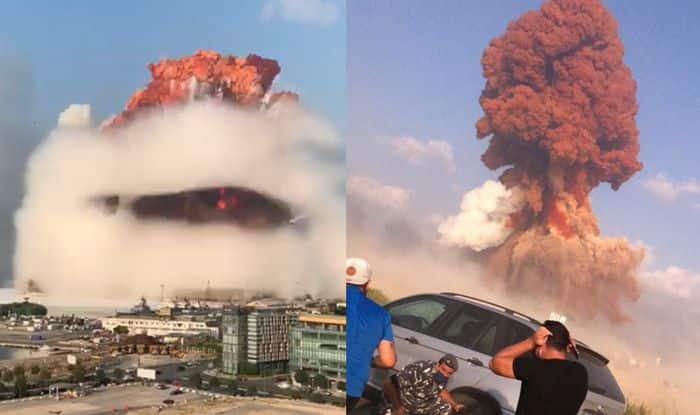Up until the eve of the deadly Beirut blast, Lebanese officials exchanged warnings over a dangerous chemical shipment in the port, but did nothing despite experts’ fears it could cause a massive conflagration.

On August 3, a day before a huge stock of ammonium nitrate exploded and ravaged swathes of Lebanon’s capital, the public works minister received a letter.
It came from the Supreme Defense Council and alerted him to a large quantity of ammonium nitrate — a dual-use chemical compound used mainly as a fertilizer — stocked in a warehouse at the port.
“I was informed 24 hours before the explosion, when I got a letter from the Supreme Defense Council,” Michel Najjar, now a caretaker minister after his government resigned over the blast on Monday, told AFP.
The letter was dated July 24 and took 10 days to reach Najjar because many government offices were closed due to coronavirus lockdown measures and the Eid al-Adha Muslim holiday.
The minister asked his adviser to get in touch with Beirut Port general manager Hassan Qureitem, who was arrested after the disaster, and request that he send all relevant documents.
Having ignored warnings over the potential danger of the ammonium nitrate from State Security, one of the top security agencies in the country, the port authorities took action a day after the minister’s adviser called.
They sent a technical team to warehouse 12 at the port to plug a hole in the southern wall that was leaving the highly volatile — but also highly valuable — chemical compound exposed.
According to a security source, the maintenance work may have started a fire that triggered the cataclysmic explosion that shook the entire nation at 6:08 pm (1508GMT) on August 4.
According to health ministry figures, at least 171 people were killed and around 6,500 injured by the blast that disfigured Beirut.
– ‘Wasn’t me’ –
The worst peacetime disaster in Lebanon’s recent history was man-made, sparking public rage that touched off frantic buck-passing among state officials.
On July 20, President Michel Aoun and Prime Minister Hassan Diab received a letter from State Security warning them of the threat posed by the ammonium nitrate.
The vessel carrying the compound had set off from Georgia in 2013 and, although Lebanon was not its final destination, the dangerous cargo was seized when the ship encountered technical problems in the Mediterranean.
Aoun told reporters on Friday he had passed on the letter to the Supreme Defense Council, which in turn sent it to the public works ministry.
“I am not responsible, and dealing directly with the port is not among my prerogatives, there’s a chain of command that should know its duties,” he said.
“Several governments and officials came and went, and the relevant authorities at the port warned them” about the ammonium nitrate, said Aoun, a main hate-figure in the protests staged in the capital since the blast.
Najjar drove the same idea home and said “several exchanges have taken place between the judiciary, State Security and port management” over the chemical cache.
– Highly flammable –
The ammonium nitrate was stored in a warehouse reserved for confiscated goods. It also held “gun powder, fireworks and pots of paint,” all of them highly flammable products, a security official told AFP.
State Security had launched an investigation into the contents of the warehouse in January.
Its report seen by AFP said that “dangerous substances used to manufacture explosives” were stored in the warehouse and that “liquid substances of the nitroglycerin type was seeping” from the premises.
The State Security report also warned that a breach on the southern side of the warehouse exposed the dangerous cache to theft.
It quoted a chemistry expert, who had visited the site, as warning that “these substances, if they caught fire, will cause a huge fire that could almost destroy the port.”
In its letter, State Security stressed that the port authorities were guilty of “negligence” and failing to comply with safety standards and procedures.
Head of Customs, Badri Daher, who was arrested after the blast, released before being detained the text of a letter he had sent to a judge in December 2017.
In this letter, he renewed a request to export or re-sell the ammonium nitrate, which no one else seemed to want to do.
According to a security source, the General Security agency had warned of the hazard posed by the cargo in a letter sent in 2014 to the president, the prime minister and the ministers of interior and public works.
AFP/FRANCE24

Leave a Reply
You must be logged in to post a comment.